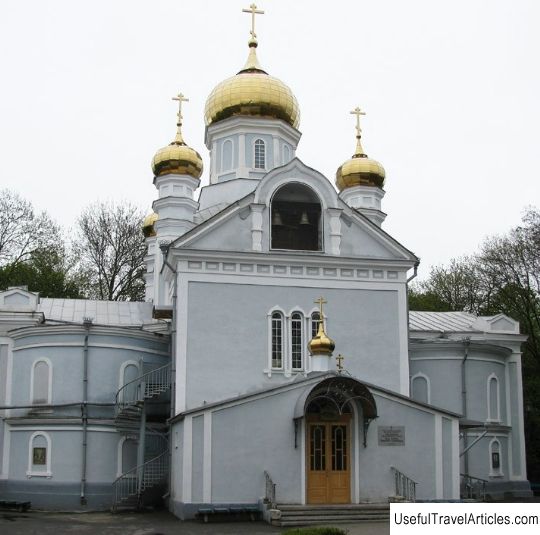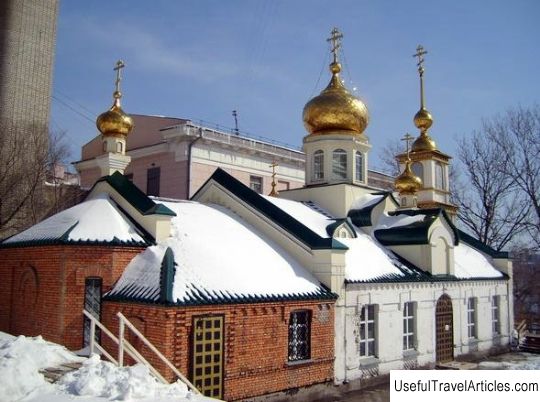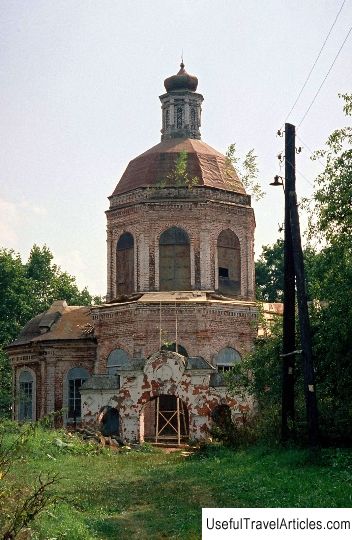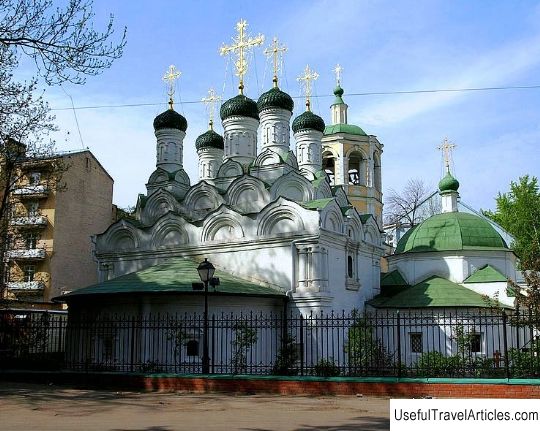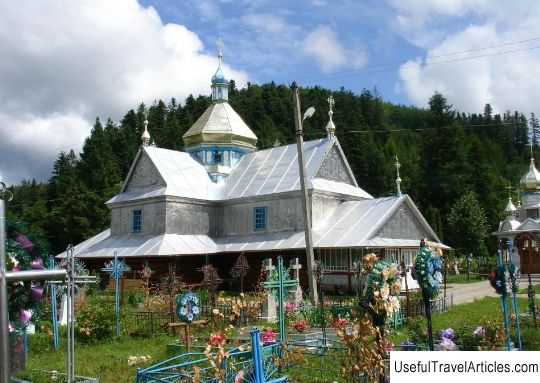Church of the Assumption of the Blessed Virgin Mary description and photos - Russia - North-West: Varzuga
Rating: 8,4/10 (2930 votes) 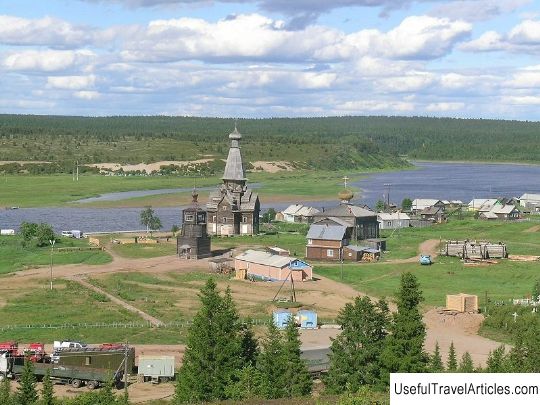
Church of the Assumption of the Blessed Virgin Mary description and photos - Russia - Northwest: Varzuga. Detailed information about the attraction. Description, photos and a map showing the nearest significant objects. Photo and descriptionThe Church of the Assumption of the Most Holy Theotokos is a 17th century temple located in the village of Varzuga, Tersk district, located in the southeastern part of the Murmansk region. It was this church that became one of the majestic monuments of wooden Russian architecture and is an integral part of the complex of monuments in the village of Varzuga. It is noteworthy that the church was built without a single nail. If you look at the Church of the Assumption from afar, it seems that it is surprisingly perfect in its proportions and slender. The silhouette of the church harmoniously merges with the surrounding nature. It is important that all the constituent elements of the church look surprisingly proportional, which gives the monument of wooden architecture a solemn and majestic look. The first mention of the church can be found in the chronicles of 1563, although they do not say anything for sure. In the Clearing Gazette for 1674, it is said that the Church of the Assumption of the Blessed Virgin Mary was built in 1674 under the leadership of the master Clement, which happened during the reign of Tsar Alexei Mikhailovich. There was a wooden cross on the southern wall of the church, which in 1985 was transported to one of the islands called Vysoky, which is 3 km from Varzuga, but this cross has not survived to this day. The construction of the church took place during the church reform of the Great Patriarch of All Russia Nikon, as well as the great schism of believers - it was during this period that the largest number of Murmansk residents desperately fought against various kinds of innovations. This circumstance affected the Church of the Assumption in the form of a classic hipped roof style, despite the fact that Nikon prohibited the use of this technique. The construction of the Dormition Church was carried out according to the principle of the so-called "golden section". The church base consisted of a quadrangle, designed as a pillar, located in the very center, and several nozzles adjacent to it - thanks to this technique, the church base has the shape of a cross in transverse view. The upper part of the church consists of an eight-walled log house, a tent, a neck of the dome and a dome, the wedding of which is made in the form of an eight-pointed cross. Various decorative elements were used to decorate the temple, for example, scales and a kokoshnik - a specially designed covering of the dome, as well as its foundations. The beauty of the church building was achieved through the use of various kinds of carved details, represented by window frames, porch posts, ridge skates and barrels. as well as patterned ends of the roof, framed in the form of lace in the lower and upper parts of the dome. The total height of the church is 34 meters. The free area for parishioners is 70 sq. meters. Three years after the completion of the construction work, the iconostasis was consecrated, which included 84 icons. Some of the icons were painted specifically for the newly built church in 1677 by the icon painters of the Anthony-Siysk Monastery, while the other part was painted by Solovetsky masters and remained from the church that was previously located here. The overwhelming majority of not only experts in wooden Russian architecture , but also historians and researchers consider the temple of the Assumption of the Blessed Virgin Mary the most remarkable of all the monuments of this kind located in the Russian North. During 1847-1848, capital repairs and restoration works were carried out in the church, while it was redone and in some part sheathed with boards. In 1860 the church iconostasis was renewed; in the period from 1888 to 1895, the largest renovation in the history of the church was carried out, about which there is even an inscription of Dmitry Afanasyevich Zaborshchikov - the son of the chief master - on the internal wooden board. In 1939, the Assumption Church lost all its bells, which were removed and prepared for transportation on the river bank, which was never received, because a strong tide of water carried the bells into the river. It was not possible to return the bells. In 1973, the Assumption Church was recognized as a monument of wooden architecture, after which it was again restored. Since 1996, the Church of the Assumption began to hold services again.         We also recommend reading Herman's castle (Hermanni linnus) description and photos - Estonia: Narva Topic: Church of the Assumption of the Blessed Virgin Mary description and photos - Russia - North-West: Varzuga. |
